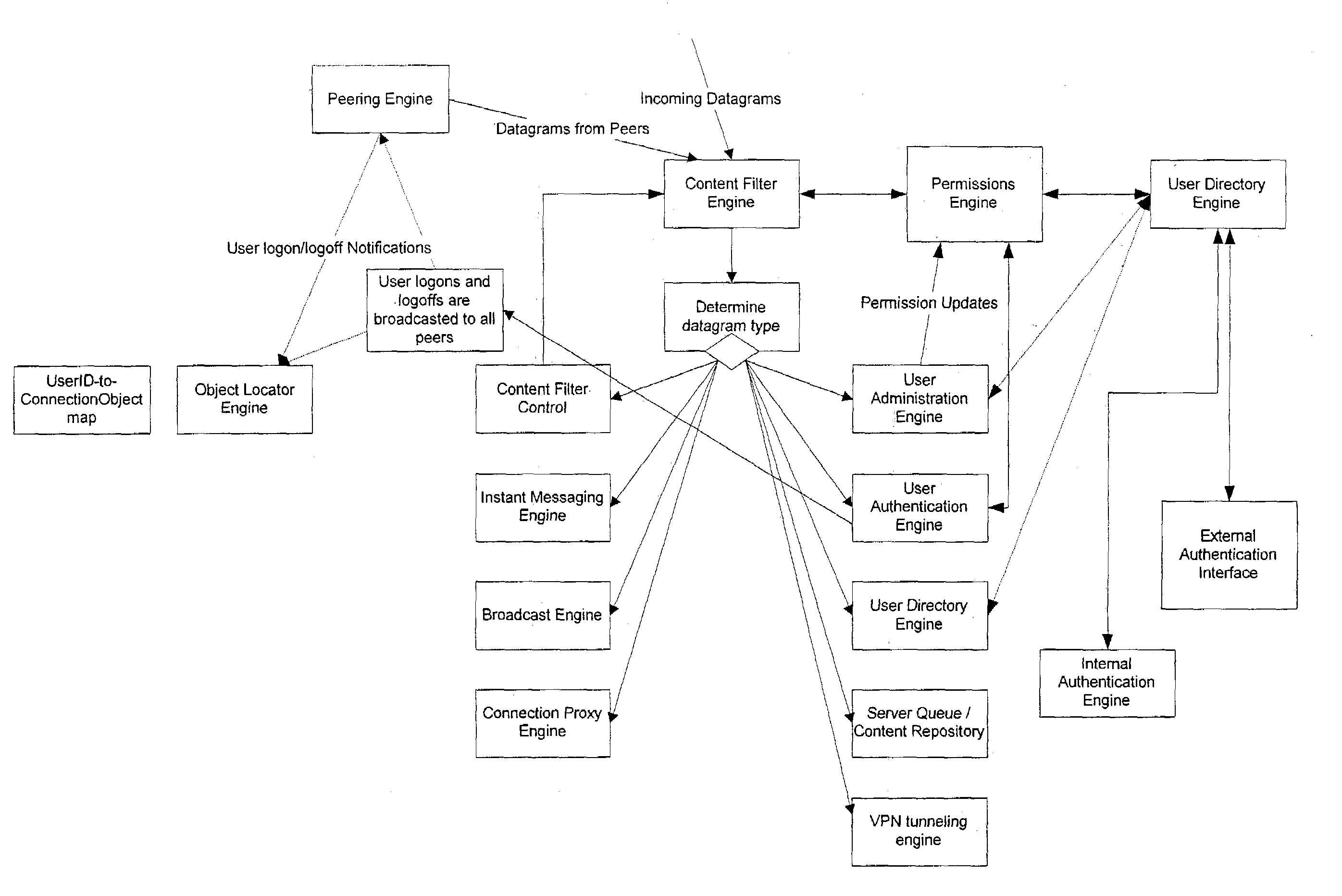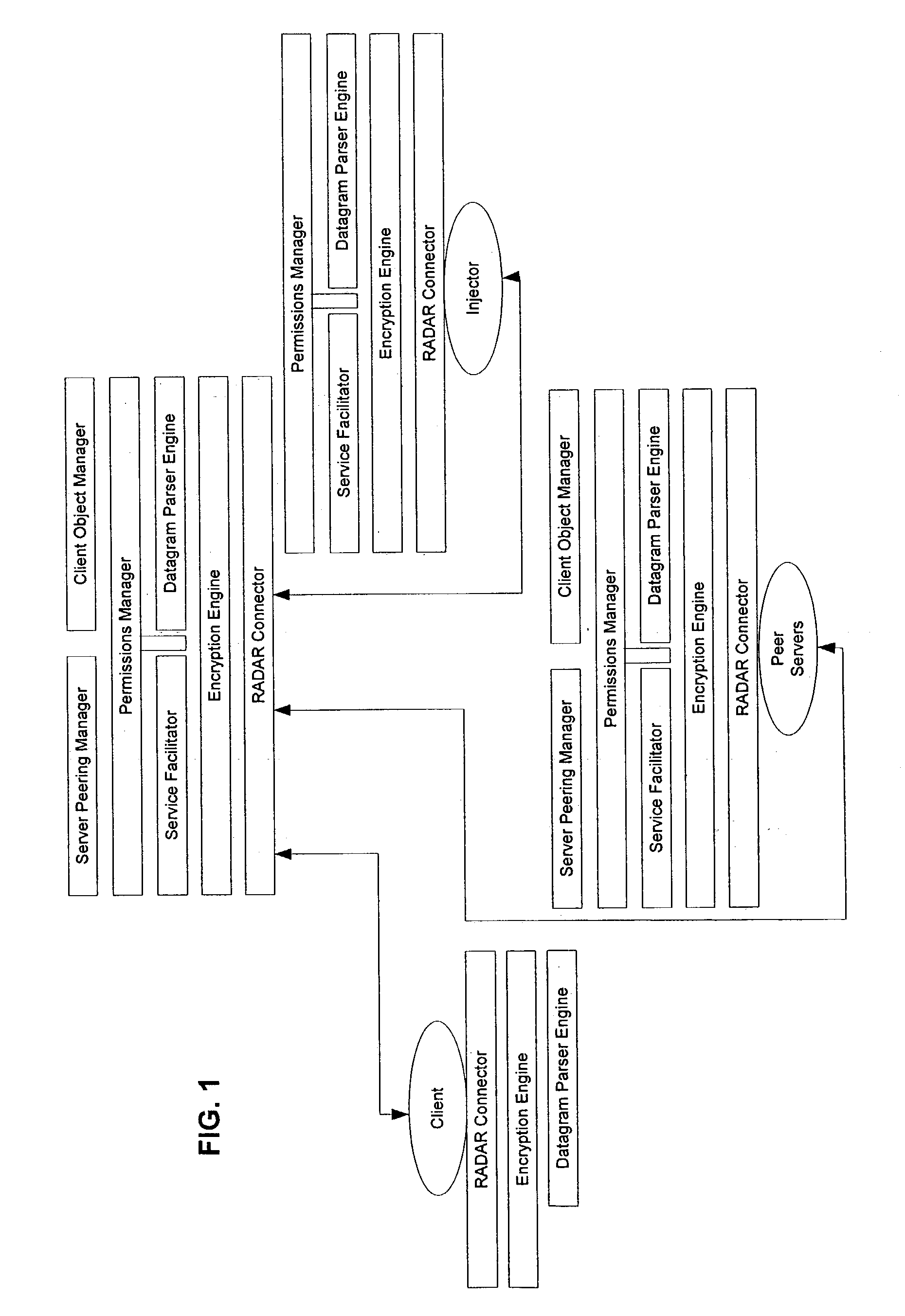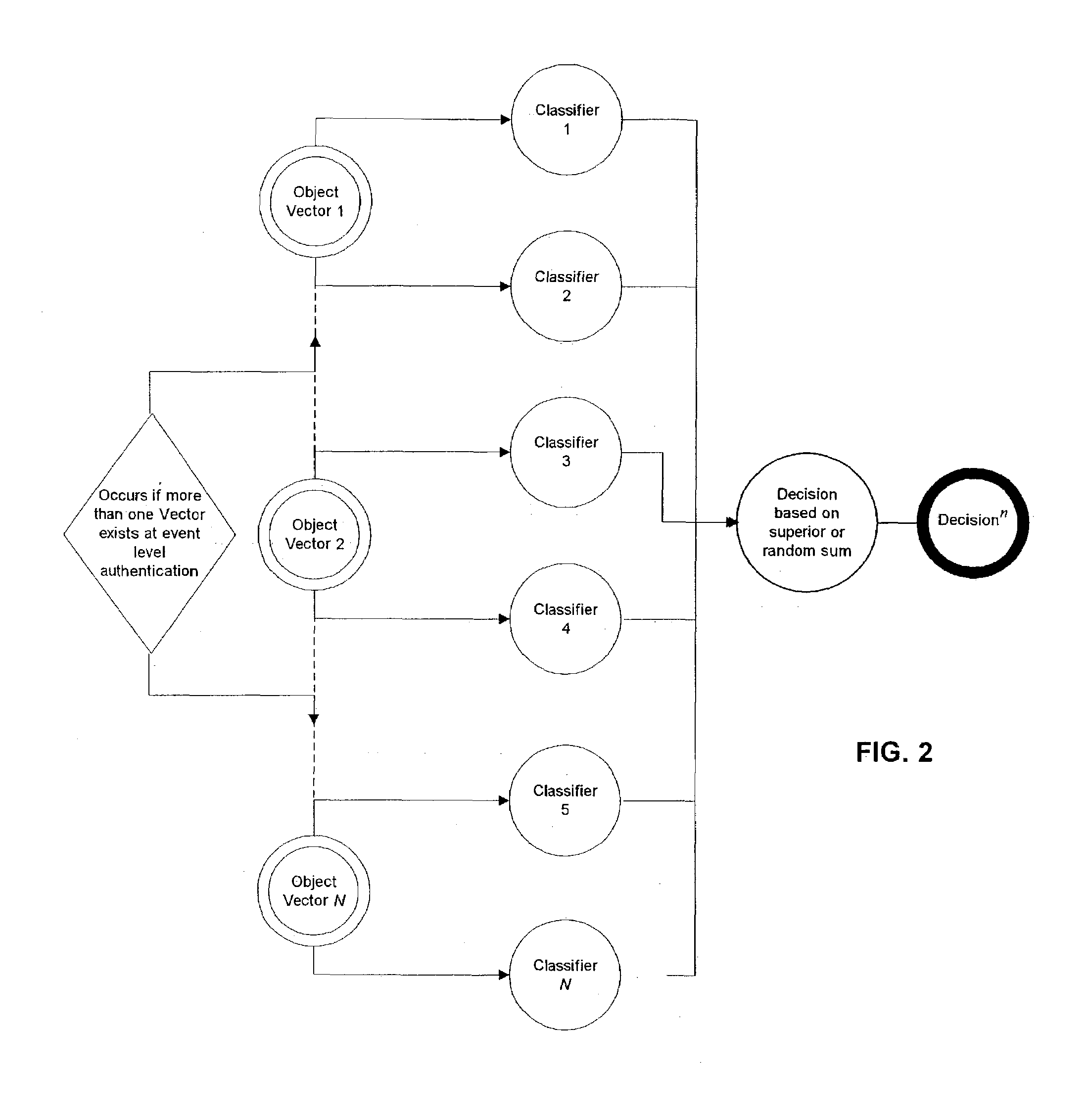Pervasive, user-centric network security enabled by dynamic datagram switch and an on-demand authentication and encryption scheme through mobile intelligent data carriers
a dynamic datagram switch and user-centric technology, applied in the field of digital network communications, can solve the problems of interception of data transactions and loss of network connections, difficult to quickly restore, and existing network systems are often affected, so as to improve the reliability, flexibility, simplicity and efficiency of secure data transmission and application sharing over a network
- Summary
- Abstract
- Description
- Claims
- Application Information
AI Technical Summary
Benefits of technology
Problems solved by technology
Method used
Image
Examples
example 1
Datagram Examples and Specifications of Major and Minor (Sub) Datagram Types
[0139]
Data Gram ExamplesInstant Message typesInstant MessageRemote loggingRemote data-collectionExecute remote commandFile TransmissionAudio-video communicationEDI transactionBroadcast typesNon real-time point-to-multipoint transmissionNon real-time multipoint-to-multipoint transmissionChannel-based chat (IRC style)Real-time point-to-point transmissionUser-to-user chatAudio-video conferenceReal-time point-to-multipoint transmission (broadcast)Audio-video broadcastReal-time multipoint-to-multipoint transmissionAudio-video conferenceUser Directory TypesQueryUpdateContent Filter ControlFilter statusFilter statisticsFilter update (add / remove rules)Filter setFilter resetMandatory Datagram FieldsThe beginning of each datagram may be laid out as follows:BytePopulatedsizebyContent1ClientDatagram major type1ClientDatagram minor type (sub type)8ServerDatagram received at server (timestamp)4ServerData gram originator (...
example 2
Object Vector Based Super Classifier and Biometrics
[0140]Referring to FIG. 2, an object vector super classifier (also may be referred to as multi classifiers) is shown. More than one data object vectors exist for event level authentication. The classification decisions are derived based on superior or random sum computed from the data vector objects, including Object Vector 1, 2, and 3 in FIG. 2. Here, each object vector is connected to one or more classifiers from classifiers 1 to N. Therefore, when super classifier is used according to one embodiment of this disclosure, feature extractions may be made from the object vector and then transformed into a set of classifiers and hence, collectively, a super classifier. Such event specific transform is advantageous due to its relatively simple distributions characterizing event-based features.
[0141]Biometrics provides a useful example for user authentication using super classifiers. In certain embodiments of this disclosure, the super c...
PUM
 Login to View More
Login to View More Abstract
Description
Claims
Application Information
 Login to View More
Login to View More - R&D
- Intellectual Property
- Life Sciences
- Materials
- Tech Scout
- Unparalleled Data Quality
- Higher Quality Content
- 60% Fewer Hallucinations
Browse by: Latest US Patents, China's latest patents, Technical Efficacy Thesaurus, Application Domain, Technology Topic, Popular Technical Reports.
© 2025 PatSnap. All rights reserved.Legal|Privacy policy|Modern Slavery Act Transparency Statement|Sitemap|About US| Contact US: help@patsnap.com



